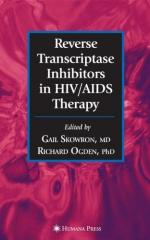|
This section contains 231 words (approx. 1 page at 300 words per page) |
Reverse transcription is an atypical method of synthesizing DNA from a template of RNA. Typically, transcription is a unidirectional process in which the nucleotide sequence of one strand of DNA is copied, thereby creating a single strand of RNA with a nearly identical sequence. This RNA strand is then utilized by the cell for a variety of reasons related to the synthesis of proteins and enzymes.
In reverse transcription, the process is reversed. RNA is used as a template to make DNA. This process is performed by certain retroviruses whose genetic code is made up of single-stranded RNA molecules. It also requires a special enzyme known as a reverse transcriptase enzyme. When these viruses infect a cell, they inject it with their RNA. Instead of being utilized in protein synthesis, this RNA goes through the process of reverse transcription, and is converted into a single-stranded DNA molecule. This single-stranded DNA is further converted into a double-stranded DNA that then becomes integrated into the cell's genome. When these foreign genes are expressed, the cell's normal functions are altered and it becomes a manufacturing site for more viruses.
The existence of reverse transcription establishes the general rule that information stored in nucleic acid sequences as either RNA or DNA can be converted between either type. However, reverse transcription does not generally occur in the normal operations of a cell.
|
This section contains 231 words (approx. 1 page at 300 words per page) |


